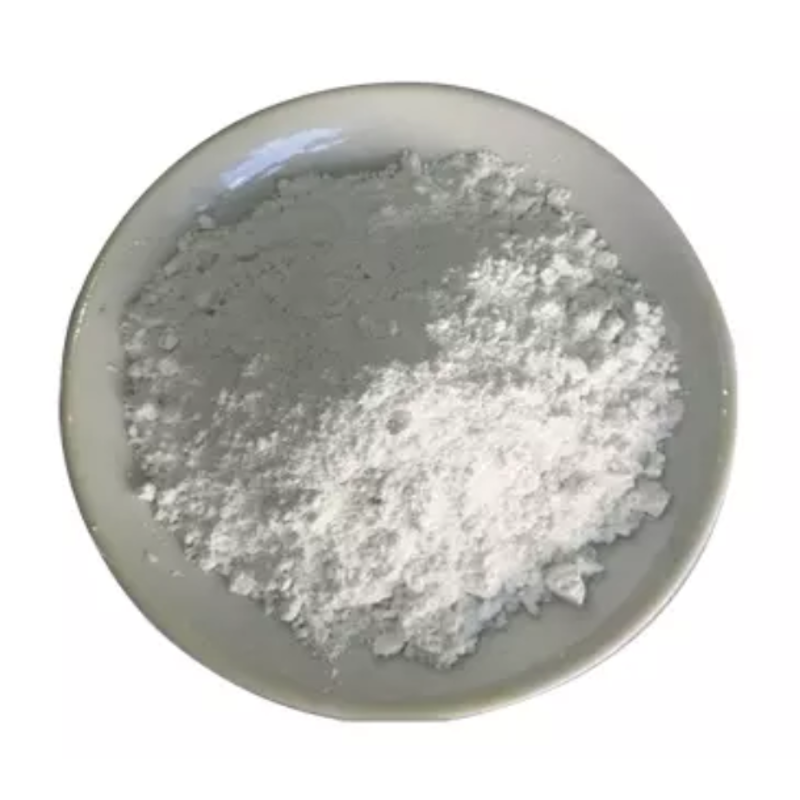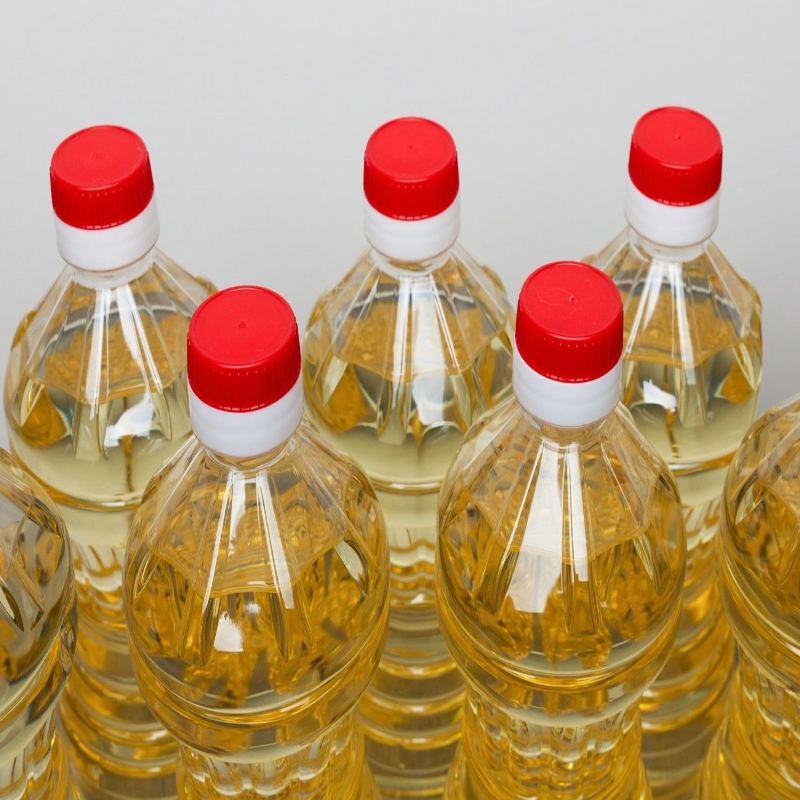The production and application of feed enzyme preparations.
-
Last Update: 2020-07-30
-
Source: Internet
-
Author: User
Search more information of high quality chemicals, good prices and reliable suppliers, visit
www.echemi.com
;. The production and application of feed enzyme preparationsamhHou Yanyanthe enzyme preparation branch of the China Food Science and Technology Associationasummary of a: This paper deals with fermentation methods in the production and application of feed enzymepreparations; Because of the good performance of enzyme preparation as feed additive, it is predicted that the feed enzyme preparation will continue to develop in the future.. AMhkeywords: solid fermentation; liquid fermentation; enzyme vitality; production costs; Environmental protection In the 1950s the United States, Europe, Japan began to recognize the role of enzyme sage into feed, but at that time the manufacture of enzymes is expensive, difficult to promote application; By the 1980s, with the rapid progress of the fermentation industry, enzyme preparations can be a large number of industrial production, there is better cost-effective, enzymes used as feed additives in foreign rapid development, in 1996 80% of european chicken feed added to beta-glucanase and xylitose-based compound enzymes, in 2000, 65% of the world's poultry wheat daily grain, 10% pig wheat daily grain and 5% chicken feed feed.. AMhin the late 1980s, Denmark, Finland, the United States, Germany and other countries related to the company's feed enzyme into China's feed market, there is a single variety of feed enzymes, there are a variety of enzymes through the compound feed enzymes, the amount added to the feed. 1%( 0. 01% to 0. 06%) 。. AMhinformation that has attracted the attention of china's livestock industry.. AMhThe National Professional Committee on Feed Safety and Biotechnology was established in 1992 by the chinese livestock industry (then known as the National Professional Committee on Feed Poisons and Anti-Nutrition Factors). An important task of the Committee is to research and develop and promote the application of enzymes in the feed industry, almost every two years a national conference, there are many applied technical studies, many animal nutrition experts in the application of enzymes in the feed industry to affirm the effectiveness. I was invited to attend the conference, met some friends in the livestock industry, learned that China's feed industry is a huge industry, feed enzyme preparation has a great market prospects.. AMhin 1993 the China Feed Industry Office and the China Fermentation Industry Association jointly held a "EnzymaticSfore preparation for feed industry seminar" in Wuxi, Jiangsu Province, attended by nearly 300 delegates.. AMhIn order to promote the application of enzyme preparations in the feed industry, the Ministry of Agriculture included enzyme preparations in the list of feed additive varieties;. AMhin 1991 China's first feed enzyme plant - Guangdong Yudoli Biotech Co., Ltd. in Zhuhai, Guangdong.. AMhso far there have been a number of domestic enterprises (Shandong Lunda Bio, Hunan Yutel, Wuhan XinhuaYang, Beijing Challenge Group, Shandong Kandian, etc.) production of feed enzymes, these enterprises have a large scale of production, annual sales from the initial less than 10 million yuan, now are more than 100 million yuan. After combing through the development of more than 20 years, this paper discusses several issues in the production and application of feed enzyme preparations, hoping that peers are correct.. AMh1 . . . . . . .. . . . . . . . . . . . . . . . . . . . . . . . . . . . . . . . . . . . . . . . . . . . . . . . . . . . . . . . . . . . . . . . . . . . . . . . . . . . . . . . . . . . . . . . . . . . . . . . . . . . . . . . . . . . . . . . . . . . . . . . . . . . .. AMh1. 1 Solid fermentationAMhso-called solid fermentation, refers to the solid or semi-solid medium on the microbial growth and metabolism method, the microorganism is mainly buckite.. AMhused in solid fermentation for the production of liquor, yellow wine, soy sauce and soon has been in China for at least 1500 years. In the sixth century A.D., after Wei Gaoyang Taishou Jia Siwei compiled "Zimin's Art", which recorded in some detail the production techniques of various songs. In Japan, sake, wine, soy sauce, soy sauce and other use of mold brewing technology has been a tradition of hundreds of years, the world's most solid fermentation industry technology experience in one of the countries. According to the solid medium contact with the air, the solid fermentation is classified as: AMh (1) static fermentation. . AMh the medium connected to the culture of the culture is made into a thin layer of less than a few centimeters for fermentation, the temperature of the medium is controlled by the room temperature of the fermentation chamber, and the air is ventilated through natural ventilation or surface forced ventilation (temperature control of the medium with wind temperature). This method has a high labor intensity, but the fermentation enzyme is highly active and stable, and is not easy to infect bacteria. . AMh (2) ventilated fermentation AMh is the accumulation of the media incoming curved on a metal porous plate into tens of centimeters thick, allowing the wind to flow up through the medium, controlling the temperature of the medium by wind temperature. Domestic solid ventilation fermentation machine has been used by a number of enterprises, can automatically (or manually) temperature control, spray micro-fog moisturizing, can basically meet the biological growth and metabolism needs to control the environmental requirements. Model -5 solid ventilation fermentation machine, each batch of production of about 800 kg. . AMh (3) fluidized bed fermentation AMh so that powdered media that are covered in metal mesh or porous plates are cultivated through the flow state of the upward blowing wind and the temperature of the medium is controlled by wind temperature. This method of Japanese research was first published in the 1980s and has entered the research phase of experimental factories. This method laboratory device fermentation enzyme vitality is significantly higher than ventilation fermentation, the key technology is how to maintain the temperature of the medium, water is homogenized, can not be too much stirring damaged bacteria, and to avoid water retention in the local place induced bacterial contamination. Entering the new century, domestic research units have developed solid fluidized bed fermentation device for industrial production, which is now in the stage of popularization and application. . AMh the advantages of solid fermentation method is that the composition of the medium is simple, grain processing by-products as the main raw material, plus water and a small amount of inorganic salt can be, the product is easy to recycle, the product is stored on the solid matrix surface, the recovery of the product requires much less solvent than liquid fermentation, less engineering wastewater. The disadvantage is that microorganisms have their suitable growth and enzyme-producing temperature, fermentation process will produce heat, should be depyrilet, large-scale industrial production, in addition to heat (cooling) method is a difficult problem; In the process of solid fermentation, it is difficult to grasp the changes of pH, temperature, material moisture, bacterial proliferation and product quantity, etc., and it is difficult to implement the controlled fermentation method of maximizing the generation of the product of the target. . AMh into the new century, steamball has been widely used in solid fermentation production enterprises, steaming ball equipment can make steaming materials, cooling, inoculation in which to complete, reduce labor intensity, improve production efficiency. . AMh the final thing to mention is that the enzyme seishaving produced by solid fermentation has a broad spectrum of enzyme activity. China's initial use of solid fermentation production of cellulase used in chicken wheat daily grain achieved good results, scholars pointed out that it is not the role of cellulase, but the product contains significant hemicellase (xylolycosase, etc.) to play a role. Bycom India (acquired by Novozyme in 2007) uses firm fermentation to produce pectin enzymes for fruit juice and wine production worldwide. The pectin enzyme produced by the biosolid fermentation of Shandong Longda has also achieved good results as a feed additive and fruit juice and wine production. . AMh 1. 2 Liquid fermentation AMh liquid fermentation as a modern industrial microbial fermentation method, can achieve pure seed culture, fermentation process parameters (PH, temperature, dissolved oxygen, feed, etc.) automatic control, large-scale production. At present, the genetic engineering bacteria of high-yielding enzymes are basically yeasts and bacteria, which need to be fermented with liquid. Enterprise single fermentation tank volume of 20 m3 to 100 m3, the production of enzyme strains are alpha-amylase, glycoenzyme, protease, lipase, phytose, xylitose, beta-glucanase, cellulase, alpha-glucosase and many other. . AMh into the new century, enterprise fermentation tanks are made of stainless steel, with variable frequency motor, pay attention to pipe valve configuration to prevent dead ends, choose absolute oil-free air compressor and efficient air filter, the fermentation process automatic control, fermentation liquid timely extraction into products, the implementation of GMP management, fermentation rate has been very low, products have better cost-effective. . AMh 2 enzyme preparations heat resistance and storage stability problems AMh for feed of the enzyme formulation products are solid and liquid two dosage forms. The original solid products are powdery, easy to fly loss when mixed with feed, at the beginning of this century has a domestic granulator, powder-like solid enzymes or liquid enzymes can be made into granular (particle size 500 to 600 m) feed enzymes, many enterprises have powdered feed enzymes (phytoase, xylitosase, etc.) manufactured into granular. . AMh feed production has a granulation process, enzyme preparations mixed with feed mixed at a high temperature granulation around 80 degrees C, enzyme variability inactivation. In addition, the production of solid enzymes or liquid enzymes in the storage of inactivation problems. . AMh Since the 1960s, many biochemists at home and abroad have carried out extensive research on the thermal stability of enzymes, and proposed some methods to improve thermal stability, such as enzyme molecular crosslinking and chemical structural modification, but these methods are technically difficult and costly, and cannot be accepted by the feed industry. . AMh into the 1980s, Europe and North America on the thermal stability and storage stability of enzymes have made great progress, not only to ensure the stability of enzymes stored over a certain period of time, but also to mix with the feed to withstand the high temperature of granulation, inactivation rate of less than 15%, but also affordable. Methods: AMh 1, selective enzyme heat resistance good production of strains; . AMh 2, add salt. Some feed enzyme solution is incorporated into a certain amount of some inorganic salts, such as magnesium salt salin or zinc salt, and then sprayed drying, the resulting enzyme powder storage stability can be significantly improved. This method has been adopted for domestic production enterprises; 3, the preparation of coating-type enzyme particles. The so-called coating type, is the outer layer of the enzyme particles is coated with an inert material, so that with the feed with high temperature granulation, to avoid or reduce the loss of damage to the enzyme. Some of Europe's leading enzyme manufacturers successfully developed coated enzyme particles for use in the detergent and feed industries in the 1980s. Domestic enterprises in this century have developed coating feed enzyme. . AMh in addition, the development of liquid dosage feed enzymes is important. . AMh liquid dosage enzymes used in feed, in order to avoid the destruction of the enzyme by high temperature granulation of feed, feed granulation after the liquid enzyme spray machine sprayed on the surface of the feed particles. This method was first used in Europe and works well. At the beginning of this century, the liquid enzyme of the European Denniske Company began to be used in Guangdong feed enterprises after granulation spraying, and provide dispensers, causing domestic enzyme preparation production enterprises to pay attention. . The production of AMh liquid enzymes involves the stabilization of enzymes in liquid conditions, and studies should be studied to identify the addition of a preservative and stabilizer so that the product can be stored at a temperature of 25 degrees C, and its enzyme vitality is not less than the label enzyme activity for 4 months in a closed container. Because liquid enzyme production saves energy and is easy to use, domestic enzymes were made in the 1990s.
This article is an English version of an article which is originally in the Chinese language on echemi.com and is provided for information purposes only.
This website makes no representation or warranty of any kind, either expressed or implied, as to the accuracy, completeness ownership or reliability of
the article or any translations thereof. If you have any concerns or complaints relating to the article, please send an email, providing a detailed
description of the concern or complaint, to
service@echemi.com. A staff member will contact you within 5 working days. Once verified, infringing content
will be removed immediately.







